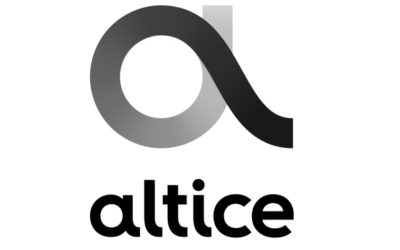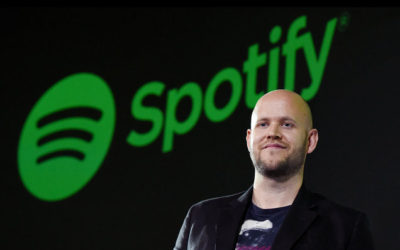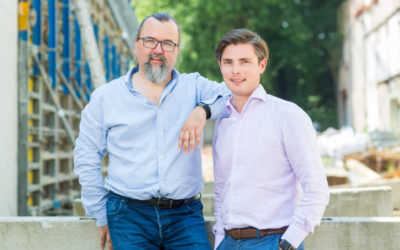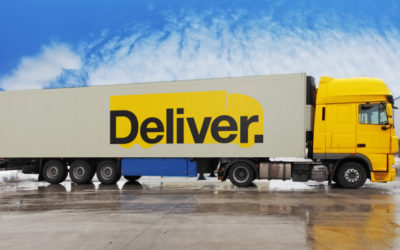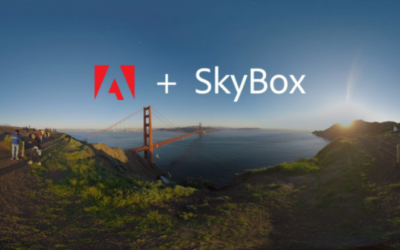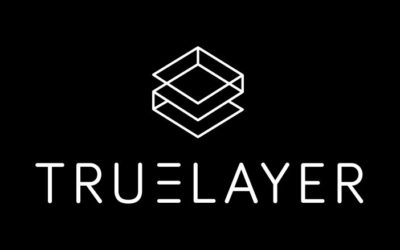Cable Operator Altice USA Raises $1.9 Billion in IPO
Cable Operator Altice USA Raises $1.9 Billion in IPO.
UPDATED: Altice USA Inc., a subsidiary of Patrick Drahi’s global telco, content, and advertising group which owns Cablevision/Optimum and Suddenlink, is expected to raise $1.9 billion in its initial public offering on Thursday.
Altice USA’s IPO is believed to mark the second-biggest U.S. initial public offering of the year to date, following Snap Inc.’s $3.9 billion deal last March.
Altice USA’s 63.9 million shares were priced at $30 each share on the New York Stock Exchange.
Shares opened at $31.60 and stayed within the $31.52-$32.68 range throughout the trading day.
The closing price of $32.71 marked a strong 9% gain for the day.
The New York Post reported Thursday that Charter Communications is looking to buy Cox Cable, the third-largest cable operator in the U.S. Altice USA was formed last year through the merger of Suddenlink Communications and Cablevision, serving approximately 4.9 million customers across 21 states.
The company then issued a statement on Wednesday advising that it was increasing the size of the IPO due to the fact that Canada Pension Plan Investment Board and BC Partners had ramped up the number of shares they were offering.
After completion of the offering, Altice will own 70.3% of its subsidiary Altice USA’s outstanding common stock and 98.3% of the voting power.
J.P. Morgan, Morgan Stanley, Citigroup and Goldman Sachs & Co. LLC acted as joint book-running managers for the offering and representatives of the underwriters, together with BofA Merrill Lynch, Barclays, BNP Paribas, Credit Agricole CIB, Deutsche Bank Securities and RBC Capital Markets as additional joint book-running managers.
Inside Spotify’s Financials: Is There a Path to Profitability Or an IPO?
In 2016, Spotify’s operating loss was €349.4 million ($368 million), which was 11.9% of revenue versus the prior year when it was €236.3 million ($238.2 million), or 12.3 percent of revenue.
In 2014 it was even higher at €191.1 million ($201.3 million), or 17.6 percent of revenue.
While product development costs held steady as a percentage of revenue in 2016 at €206.85 million ($217.9 million), or 7.1 percent of revenue, the same ratio as in 2015; general and administrative revenue grew to €175.2 million ($184.6 million), or 6 percent of revenue, from 2015’s expenditure of €105.9 million ($111.6 million), or 5.5 percent of revenue; and worse, sales and marketing costs totaled €417.9 million ($440.3 million), or 14.3 percent of revenue, from €258.7 million ($272.6 million), or 13.4 percent or revenue.
Overall, its cost of goods in 2016 was €2.48 billion ($2.61 billion), or 84.6 percent of revenue.
According to industry sources, the on-demand digital service model typically carries a cost of about 70 percent of revenue for royalty payments, of which 60 percent of revenue pays for licensing master recording and 10.5 percent of revenue for publishing royalties.
That means instead of paying 60 percent for label royalty costs, Spotify might actually be paying something like 62 percent, and with publishing added in, a total of 74.5 percent.
Thanks to its debt offering, Spotify now has nearly a €1.6 billion ($1.713 billion) war chest (i.e. €796 million or $838.6 million) in cash and €830 million ($874.5 million) in short-term investments, and can cruise for at least another four years without doing a public stock offering if it doesn’t make any more big acquisitions and it keeps EBITDA loss and business investment spending in check at about €200 million a year while continuing to pursue growth.
At the same point in time and at the same discount, it works out to the same equity value cost for Spotify at the $13 billion mark, a valuation that company management hopes a public offering would bring, according to press reports.
So the trade-off in waiting until after it releases its financials next year is paying about $100 million in interest (for 2 years) in total, and an equity transfer to the bondholders of an additional $379 million in value.
Without the clear path to profitability, analysts speculate the valuation would be lower than desired by Spotify management and shareholders, since Spotify’s investment bank and its consortium of underwriters would be setting the valuation.
Inside the Mind of a New York VC: Laconia Capital Group
For us, the seed stage investing that we’d done as angels was a little too high risk.
But they do see, I think, an extraordinary amount of the sausage-making, if you will, leading up to the eventual closing of a deal.
DA: And their capital plan.
JS: I think it’s the ecosystem.
If they don’t raise a tremendous amount of money and only raise the money they require, then the level of expectation isn’t as great and that enables them to pursue nice consistent growth.
DA: They’re not self-promoters.
And what does a company need to do to raise an A?
We’ll definitely do our technology due diligence in terms of what their stack looks like, but the best technology does not make you win.
JS: We’ve talked about collaboration and transparency – we’re like that in every aspect of our business, from our LPs to our portfolio companies to our venture partners.
JS: How’s this for underhyped?
Searching for Stephs: Identifying the Greats in Early Stage Startups
Searching for Stephs: Identifying the Greats in Early Stage Startups.
At my investment firm, we look for “Stephs” — as in NBA player Steph Curry for the Golden State Warriors.
Their stories prove that confidence, resiliency, overcoming obstacles, determination, grit, perseverance, drive, rising to the occasion, relentlessness and belief in the impossible are all characteristics of greatness.
When it comes to early-stage investing, you’re betting a lot on people, but the most important bet is often on the leader.
As such, a key skill set for any early-stage investor is having the ability to detect people’s early signals in order to identify these types of leaders before anyone else.
What early markers help identify these leaders as eventual forces of nature?
Steph was obviously showing flashes of his current greatness in college, but very few people ever imagined he could continue to evolve his game and become this good on a professional level.
Look for the Right Traits I think it’s so wonderfully appropriate that the Golden State Warriors, a franchise located in Silicon Valley, a region that is defined by the ability to spot trends and talent before they become worldwide phenomena, were the franchise to draft the silky-smooth, six-foot-three guard.
If people were really willing to look at the right things and believe in the unimaginable, they would’ve identified Steph’s innate abilities, rigorous training ethic, vision and confidence that is fundamentally changing the game of basketball.
As we all know, the bet paid off and the foundational tenets to Steph Curry’s superhuman performances are no different for entrepreneurs.
Know your worth: How to negotiate compensation at a startup
Know your worth: How to negotiate compensation at a startup.
The number on your paycheck doesn’t define your full worth.
Levers When you get an offer, be sure you know what exactly that number means.
You may very well be getting cash, commission, bonuses and equity all at once – though bonuses are usually reserved for non-sales roles.
At a startup, a lower base salary may be offered, but that number comes with the expectation of a lower quota, more territory, and probably more commission.
If you can present a hiring manager with some goals with a high ROI, and a plan for how to achieve them, your request for bonuses will be much stronger.
If you’re in that camp, ask yourself if the new opportunity and experience is worth it.
Also, the number you’re offered probably has some weight behind it—maybe it’s what another person in your position is making currently, or it could be based off of industry data.
In these conversations, you must be realistic with what you’re currently making and what the company can offer.
The tech startup world is closely knit, and you may want to work with this company in the future, so it’s important to keep these conversations respectful and positive.
Vencore files for initial public offering, seeks $250M
Vencore has filed for an initial public offering to raise $250 million from investors in a rare instance of a government technology services contractor seeking to become a publicly traded company.
Chantilly, Va.-based Vencore filed an S-1 registration statement required for an IPO Wednesday with the Securities and Exchange Commission.
If the IPO goes through, Vencore would trade on the New York Stock Exchange under the symbol “VNCR.”
That puts Vencore as government services’ ninth-largest public company based on sales in between ManTech International at $1.06 billion and NCI Inc. at $322.4 million.
Approximately 39.4 percent of Vencore’s sales last year came in the intelligence community, 35 percent in space, 14.5 percent in defense, 9.5 percent in federal civilian and the rest with commercial customers.
(Both the Wyle and Camber transactions were among our “Top Deals of 2016”) Lindsay Goldberg found a buyer for PAE last year in Platinum Equity after five years in the portfolio and Metalmark Capital found a buyer for Schafer Corp. in Belcan earlier this year after nine years in the portfolio.
The market has also seen several companies file to go public but then opt for a direct sale instead.
Veritas acquired Alion Science and Technology Corp. in August 2015, one month after Alion filed for an IPO to pay down its roughly $561 million in debt.
He is a Veritas portfolio company veteran who held the CEO role at Vangent for four years prior to its acquisition by General Dynamics in 2011 for $960 million.
Curtis also was chief executive role at Vangent’s predecessor Pearson Government Solutions for six years.
Elastic enters APM space with Opbeat acquisition
Elastic enters APM space with Opbeat acquisition.
Today, at Elastic’s customer event in London, the company announced it has acquired Opbeat, a SaaS-application performance management vendor for an undisclosed amount.
What’s more, it maps production application issues directly to the relevant developer source code, making it easier to fix the problem without having to hunt in the code to find the problem area.
In recent years, the company has moved beyond straight search and into analytics, particularly focusing on log data that puts them squarely in competition with companies like Splunk.
Elastic CEO Shay Banon sees today’s acquisition through a strategic lens, giving his company a leg up on the competition by offering not only a way to search log data, but also giving insights into the applications that are generating the data and why they may be performing poorly.
Rasmus Makwurth, who was CEO at Opbeat says joining Elastic allows the company to speed up the product roadmap and take advantage of the breadth of the Elastic platform.
Joining Elastic lets his company take advantage of the search tool, as well as analytics, logging and data visualization available on the Elastic platform to greatly expand the vision.
Opbeat’s employees have already joined Elastic and are working with the Elastic team to build an on-prem application to go with the existing SaaS piece.
Taking a cloud-native application and engineering it to be on prem is no simple task, but the two companies hope to have an on-prem version ready in several month.
It’s worth noting that Opbeat was using Elasticsearch in its product, but as Banon pointed out using a product and making it part of the stack are two different matters, and it will take a significant engineering effort to incorporate the new company into the fold as both a cloud and on-prem product.
Construction tech company Aproplan closes €5 million Series A
Construction tech company Aproplan closes €5 million Series A.
Brussels-based Aproplan, which bills itself as akin to “Salesforce for construction,” is one such company, and today is disclosing that it has raised €5 million in Series A funding.
The round was led by Fortino Capital, and existing investors including Inventures, Matexi, and the co-founders of Showpad: Pieterjan Bouten, Louis Jonckheere, and Peter Minne.
That includes creating a better and more efficient ‘paper trail’ — albeit, a digital one — as transparency, traceability and accountability is paramount in the construction industry.
Explains Aproplan co-founder and CEO Thomas Goubau: “The construction industry has been slow to adapt to technology.
There are a lot of parties involved in a construction project and they simply do not trust one another.
Actually, they trust each other so little that they still send documents via certified mail to protect themselves.
“Think of where marketing was 16 years ago before Salesforce came around,” he says.
“That’s where the construction industry has been up until recently.
Available for Windows, macOS, Android and iOS, the Aproplan app is designed to be used collaboratively by contractors, engineers, architects, and clients to facilitate communication, logging, and reporting of construction projects.
JD.com invests $397M into luxury marketplace Farfetch as part of a new strategic partnership
JD.com invests $397M into luxury marketplace Farfetch as part of a new strategic partnership.
JD.com, China’s second-largest e-commerce company after Alibaba, is pumping $397 million into Farfetch, a marketplace for luxury brands, as part of a new strategic partnership.
JD.com founder and CEO Richard Liu will take a seat on Farfetch’s board as part of the deal, which makes JD.com one of its largest shareholders.
Last year, Farfetch raised $110 million specifically to support its expansion in Asia.
China, where Farfetch launched in 2014, had already become its second-largest market by the time that round was announced in May 2016.
Farfetch currently partners with 200 brands and 500 multi-brand retailers there and its new alliance with JD.com will give it access to JD.com’s wide logistics network (including JD Luxury Express, its premium courier service), online payment and consumer microcredit tools, social media resources such as its partnership with WeChat, and big data.
“We are deeply honored and excited to be announcing this partnership with Richard Liu and JD.com,” he said.
“China is the world’s second-largest luxury market, and we are delighted to have such a respected partner, known for its strict protection of IP, with whom to address Chinese luxury consumers.” In return, JD.com gets an important ally as it focuses on high-end retail to help it differentiate from Alibaba, which despite various anti-counterfeiting efforts is still saddled with a reputation as a haven for knockoffs.
JD.com’s other efforts to attract affluent consumers include holding runway shows in fashion capitals like New York and Milan, hiring a new president of international to develop partnerships with global brands, and launching JD Fashion as its own business unit.
Featured Image: Dan Dalton/Getty Images
Bootstrapping Basics: How to self-fund your startup?
Bootstrapping Basics: How to self-fund your startup?.
Bootstrapping, or in other words self-funding your business is the way most startups launch.
If you have the necessary resources to execute your startup plan and a capital pool that can sustain you from getting drained out, then nothing can be better than a bootstrapped startup as you will enjoy complete creative and business freedom over your startup.
The go-to-market time is the shortest because once the founders decide; the next step is just executing it instead of convincing your board or investors.
The downside (or rather caution) is that the oxygen to this business is your personal finance.
If you start as offering services for other businesses, you will be getting money in your startup account to fund your product initiatives.
Make a cash flow rich business: If you want to be in product business, then enter with a product line that goes out of shelves faster.
The quicker the sales, the quicker you will get your cash back and the quicker you will be able to invest it in your business.
Price the products in a way that you will start relishing profitability once you hit a certain achievable scale (For eg.
Save and plan in advance — You might get unexpected hiccups and road-jams.
CDSL initial public offer becomes most subscribed maiden issue in a decade
CDSL initial public offer becomes most subscribed maiden issue in a decade.
The IPO is the most subscribed maiden issue in a decade with an oversubscription of 169.91 times.
Data from the research and analytics company for domestic fund-raising show Sankhya Infotech’s IPO in 2000 was subscribed 284 times, while FCS Software was subscribed 176 times in 2005.
Indus Networks IPO in 2000, which had a subscription of 174 times, was the third-most subscribed offering.
Other highly subscribed offerings in recent times include Avenue Supermarts (D-Mart) which was subscribed nearly 104 times, and HUDCO at almost 80 times.
Last year in July, staffing firm Quess Corp’s IPO was subscribed 145 times.
The IPO of BSE’s depository arm CDSL, to raise Rs 524 crore, received bids for over 421 crore shares against the total issue size of 2.48 crore shares, as per NSE data till 2000 hours.
CDSL on Friday raised Rs 154.07 crore from 15 anchor investors.
The IPO size is of 3.51 crore shares, including anchor portion of 1 crore shares.
The book running lead managers to the offer are Haitong Securities India Pvt Ltd, IDBI Capital Markets and Securities Ltd and YES Securities (India) Ltd.
Tantan, China’s top dating app, raises $70M for monetization and overseas expansion push
Tantan, China’s top dating app, raises $70M for monetization and overseas expansion push.
Chinese startup Tantan, which is probably most comparable to Tinder, has raised $70 million in new capital as it looks to monetize its business for the first time and explore overseas expansion options.
Three-year-old Tantan claims 60 million ‘validated’ users — i.e. not fake accounts — of which six million are active on a daily basis.
That’s particularly notable because YY is one of China’s more prominent live-streaming services, and already we have seen social networks like Momo (a fellow dating app) and microblogging service Weibo move into live-streaming with much financial success.
While it is preparing to make money for the first time, Tantan isn’t planning a move into live-streaming at this point, however.
Rather than streaming, Tantan will focus on making money via membership services, which would be a set of additional features for ‘VIP’ users who pay a monthly fee.
We will test our VIP service in a few cities initially,” Wang said, although he declined to go into specific details.
Another expansion focus for Tantan is to move outside of China.
Anecdotally, Tinder seems to have good usage across Asia — excluding China — thanks to its global brand, but there are others smaller rivals in individual markets while Paktor, which has raised over $50 million from investors and expanded into streaming services, maintains a regional presence, too.
This new funding takes Tantan to $120 million raised from investors to date, according to Crunchbase.
Workforce development seen as key to region’s future
STAUNTON — Unemployment has been cut in half in Waynesboro, Staunton and Augusta County since 2010, even as the area’s top economic sector remains manufacturing — an industry that has suffered big losses nationwide in the last quarter-century.
Area economic developers said Wednesday morning that the key to the region’s future is workforce development, continued area partnerships and the proper strategic investments.
Greg Hitchin, director of economic development and tourism in Waynesboro, said the designation of the Staunton-Waynesboro-Augusta County area as an official metropolitan area helps in getting funding and in site selection for industries.
The U.S. rate in January 2010, for instance, was 9.8 percent, and in December of 2016, it was 4.7 percent.
Manufacturing continues to be the top employment sector in the region, accounting for 14.6 percent of jobs, although health care isn’t far behind at 12.8 percent.
While large companies still dominate the employment market, the three communities continue to work on attracting small businesses, according to Amanda Glover, director of economic development and tourism for Augusta County.
She pointed to efforts to help small businesses, such as Grow Waynesboro, which provides grants to small startups, and the Staunton Creative Community Fund, which loans money to local startups as well.
Meanwhile, three individuals were recognized on Wednesday with Dennis Burnett Community Excellence Awards, given in honor of the late economic developer for the Shenandoah Valley Partnership and Augusta County.
Hershey said she was appreciative of the honor and said of the late Burnett, that “You will always be in our hearts.”
Kroggel, who is chairman-elect of the Greater Augusta Chamber, was recognized for his willingness to host economic development events and serve as a resource.
Russian freight service Deliver closes seed round of $8M, with European plans
Russian freight service Deliver closes seed round of $8M, with European plans.
Inventure Partners (which has invested in Gett, Busfor, Amwell, Chronext and Netology) invested $3 million, joining A&NN Group and Singapore-based Amereus Group as backers.
Deliver’s competitors include Palletter (in Estonia), which matches shipments to nearby trucks in real time, and Convargo (in France), which has raised a $1.69 million round and which also connects shippers with truckers.
Deliver is doubling down on its largest base in Russia, where it has more than 59,000 confirmed drivers registered, so far.
Deliver now hopes to secure up to 15 percent of the Russian freight market, with plans to begin European expansion and promote more international transportation.
European haulage networks were worth $96 billion in 2015.
Up to 23 percent of trucks have “empty kilometers” because of the ineffective transport planning involved, which is why these startups have sprung up.
Deliver can calculate shipping prices in seconds, handles several thousand orders a month and claims an average monthly growth of 30 percent.
It finished beta testing in January of this year and entered into the active sales and regional development phase.
Founder Danil Rudakov says: “The efficiency of the logistics market today is extremely low in Russia and in Europe.
CDSL initial public offer oversubscribed 170 times
CDSL initial public offer oversubscribed 170 times.
(File Photo) The initial public offering (IPO) of Central Depository Services (India) Ltd (CDSL) received an overwhelming response from investors, as the issue was oversubscribed 170 times on the last day of the offer.
The IPO received bids for over 421 crore shares against the total issue size of 2.48 crore, according to the NSE data.
The offer has generated demands worth nearly Rs 63,000 crore, excluding the anchor portion of Rs 154.07 crore that was already allocated to investors.
The category reserved for qualified institutional buyers (QIBs) was oversubscribed 148.71 times, non-institutional investors 563 times and retail investors 22.98 times.
The issue has received about 17.72 lakh applications.
CDSL on Friday raised Rs 154.07 crore from 15 anchor investors.
The price band for the share sale has been fixed at Rs 145-149.
The IPO size is of 3.51 crore shares, including anchor portion of 1 crore shares.
Earlier this year, D-Mart parent Avenue Supermarts IPO was oversubscribed 104.48 times.
This NYC Startup Raised $1.7M to Fuel R&D for IoT Applications
The company, originally designed for military use, is an engineer’s best friends when it comes to building IoT applications.
Tell us about your product or service.
Reality AI is an AI-based signal processing engineer.
Reality AI offers an application for R&D Engineers working to develop these products to create software that detects specific events and conditions in vibrations, sound, accelerometery, electrical signals, imagery, LiDAR, and remote sensing.
Three things that are different about Reality AI: 1- We are not based on Deep Learning.
Our market is companies making devices instrumented with sensors – potentially as large as the Internet of Things itself.
What factors about your business led your investors to write the check?
Customers are way more valuable than investors.
Where do you see the company going now over the near term?
What’s your favorite rooftop bar in NYC to unwind?
Adobe acquires Mettle’s SkyBox tools to expand its VR video portfolio
Adobe acquires Mettle’s SkyBox tools to expand its VR video portfolio.
Adobe today announced that it has acquired all of Mettle‘s SkyBox technologies and plug-ins for building transitions, titles and effects in VR applications and 360 degree videos.
Mettle had already made a name for itself over the last few years by providing these plug-ins for Adobe tools like Premiere Pro and After Effects, to the Adobe team was obviously aware of Mettle’s efforts in the area.
“We believe making virtual-reality content should be as easy as possible for creators.
The acquisition of Mettle SkyBox technology allows us to deliver a more highly integrated VR editing and effects experience to the film and video community,” said Steven Warner, Adobe’s vice president of digital video and audio, in today’s announcement.
“Editing in 360/VR requires specialized technology, and as such, this is a critical area of investment for Adobe, and we’re thrilled Chris Bobotis has joined us to help lead the charge forward.” While Adobe already offers some tools for building these kind of effects in 360/VR, Mettle’s specialized plug-ins go far beyond what’s currently available by default.
Current Mettle users include the likes of Discovery, CNN, HBO, Google, Apple, Facebook and the New York Times.
Adobe says that it will integrate SkyBox’s features natively into future releases of Premiere Pro and After Effects.
Given that SkyBox was only available for these two platforms anyway, chances are that most current users won’t see any major differences in the short term.
The financial details of today’s acquisition were not disclosed.
TrueLayer raises $3M Series A to provide fintech companies with easy access to bank APIs
TrueLayer raises $3M Series A to provide fintech companies with easy access to bank APIs.
The round was led by Anthemis Group, with participation from existing investor Connect Ventures, and will be used by TrueLayer to expand its team and increase coverage of supported banks before opening up beyond beta testers later this year.
The European Union’s Second Payment Services Directive (PSD2), due to be written into law by January 2018, will force banks operating within the EU to offer read and write access, so that, with your consent, third-party apps and services can access your bank account data, including being able to make and receive payments on your behalf.
Unsurprisingly, a plethora of fintech startups are already getting high on PSD2 fumes by building out a range of products ahead of time, from Personal Finance Manager apps (PFMs), credit and loans, to card-linked offers and cash-back, ready for when PSD2 legislation finally kicks in.
TrueLayer, on the other hand, is taking a picks ‘n’ shovels approach to what many predict will be a PSD2-driven fintech gold rush.
“We believe that PSD2 will be a once in a lifetime opportunity for startups to displace incumbent banks and financial service providers,” TrueLayer co-founder Francesco Simoneschi tells me.
“We want to provide developers with a simple, secure and universal API to access the bank infrastructure and enable the next wave of financial services”.
It is available in the U.K. and Simoneschi says TrueLayer will expand to other EU countries later in 2018.
“The API will start offering additional bank services beyond data, including payment initiation (an API to send wire transfers) and the full scope of the opportunities enabled by PSD2 and Open Banking,” he says.
Eventually — and once the startup has attained the appropriate PSD2-related licences from the U.K. regulator — Simoneschi hopes that TrueLayer will be able to act as an “umbrella license” and therefore the regulatory as well as technical gateway for fintech startups and other kinds of businesses to go in search of PSD2 gold.

